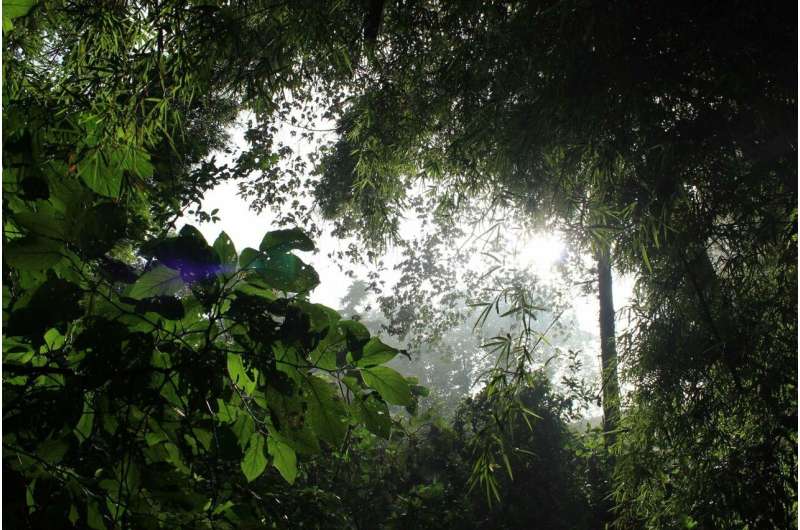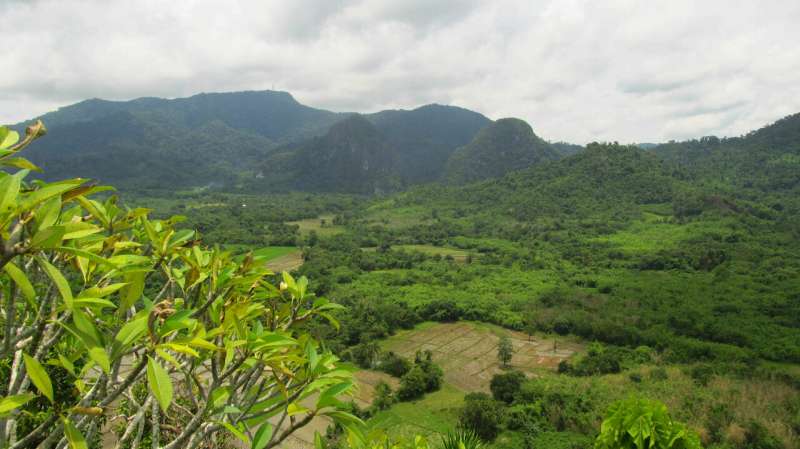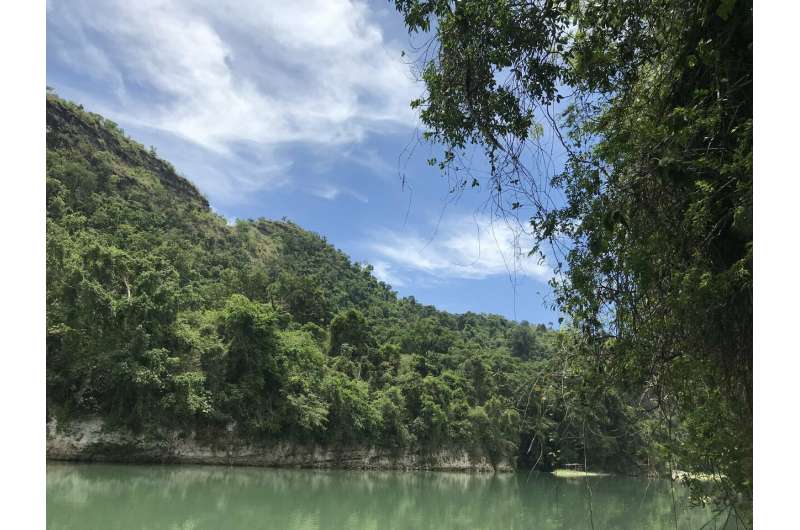Despite previous notions of tropical forests as "green deserts" not suitable for human habitation it is now clear that human occupation and modification of these habitats occurred as far back as 45,000 years ago. As our species expanded into these settings beyond Africa, they burnt vegetation to maintain resources patches and practiced specialized, sustainable hunting of select animals such as primates. Credit: Patrick Roberts
Investigations into what it means to be human have often focused on attempts to uncover the earliest material traces of art, language, or technological complexity. More recently, however, scholars have begun to argue that more attention should be paid to the ecological uniqueness of our species. A new study published in Archaeological Research in Asia reviews the palaeoecological information associated with hominin dispersals into Southeast Asia and Oceania throughout the Pleistocene (1.25 Ma to 12 ka). Our species' ability to specialize in the exploitation of diverse and extreme settings in this part of the world stands in stark contrast to the ecological adaptations of other hominin taxa, and reaffirms the utility of exploring the environmental adaptations of Homo sapiens as an avenue for understanding what it means to be human.
The paper, published by scientists from the Max Planck Institute for the Science of Human History focuses on hominin movements across the supposed Movius Line, a boundary previously argued to separate populations with different cultural and cognitive capacities. While such divisions and assumptions are now clearly outdated, the authors argue that focus on this part of the world may, instead, be used to study patterns of colonization of diverse tropical and maritime habitats by members of our ancestral line. Noel Amano, co-author on the study, says, "Analysis of biogeochemical records, animal assemblages, and fossil plant records associated with hominin arrival can be used to reconstruct the degree to which novel or specialized adaptations were required at a given place and time."
Southeast Asia offers a particularly exciting region in this regard, as such records can be linked to a variety of hominins throughout the Pleistocene, including Homo erectus, Homo floresiensis (the "Hobbit"), and Homo sapiens. Patrick Roberts, lead author of the study, says, "While earlier members of our genus appear to have followed riverine and lacustrine corridors, Homo sapiens specialized in adaptations to tropical rainforests, faunally depauperate island settings, montane environments, and deep-water marine habitats."
The authors hope that in the future, the growth of new methods and records for determining past hominin ecologies will enable similar comparisons in different parts of the world, further testing the unique capacities of our species during its global expansion.
-
Lowland Palawan, the Philippines -- Southeast Asia offers a particularly exciting region in regard of early hominin movements across the supposed "Movius Line" a boundary previously argued to separate populations. Records from the region can be linked to a variety of hominins throughout the Pleistocene, including Homo erectus, Homo floresiensis (or "the Hobbit"), and Homo sapiens. Credit: Noel Amano
-
Cagayan, Northern Luzon, the Philippines -- Southeast Asia offers a particularly exciting region in regard of early hominin movements across the supposed "Movius Line" a boundary previously argued to separate populations. Records from the region can be linked to a variety of hominins throughout the Pleistocene, including Homo erectus, Homo floresiensis (or "the Hobbit"), and Homo sapiens. Credit: Noel Amano
More information: Patrick Roberts et al, Plastic pioneers: Hominin biogeography east of the Movius Line during the Pleistocene, Archaeological Research in Asia (2019). DOI: 10.1016/j.ara.2019.01.003
Provided by Max Planck Society


























